How to take plant cuttings – grow more of your favorite plants
Discover how to take plant cuttings from shrubs, perennials and trees to propagate more of your best-loved varieties
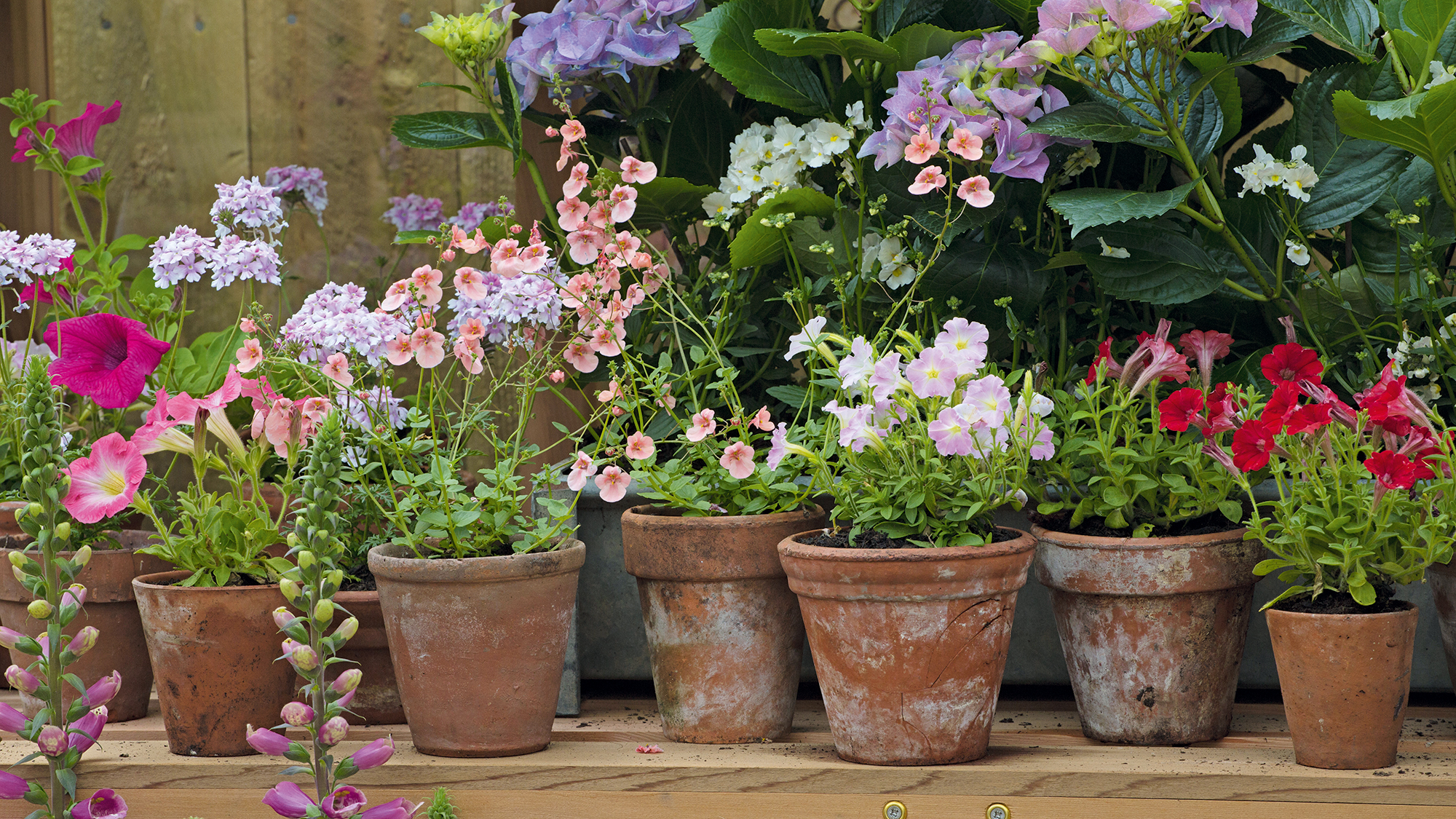

Learn how to take plant cuttings, and you will be able to fill your pots and borders with an unlimited supply of your favorite varieties.
Not only is taking plant cuttings one of the most frugal and sustainable garden ideas, but it is also one of the most enjoyable. There is no greater pleasure than propagating and nurturing new plants – watching them grow large enough to eventually take pride of place in your garden.
‘It will take time to grow new plants from cuttings, but it won’t cost you anything, and you will be able to replicate the specific plant,’ says Period Living’s gardening expert Leigh Clapp.
‘There are many plants that can be grown from cuttings. It is like a little bit of magic that with a few careful cuts you can create a new plant. It takes practice, preparation and patience, but rewards with the results.’
Bear in mind that cuttings are not the only way of propagating plants – as well as sowing seeds, learning how to divide plants will also allow you to recreate many varieties. So it’s worth checking what the most reliable method is for your individual plant.
How to take plant cuttings – a step-by-step guide
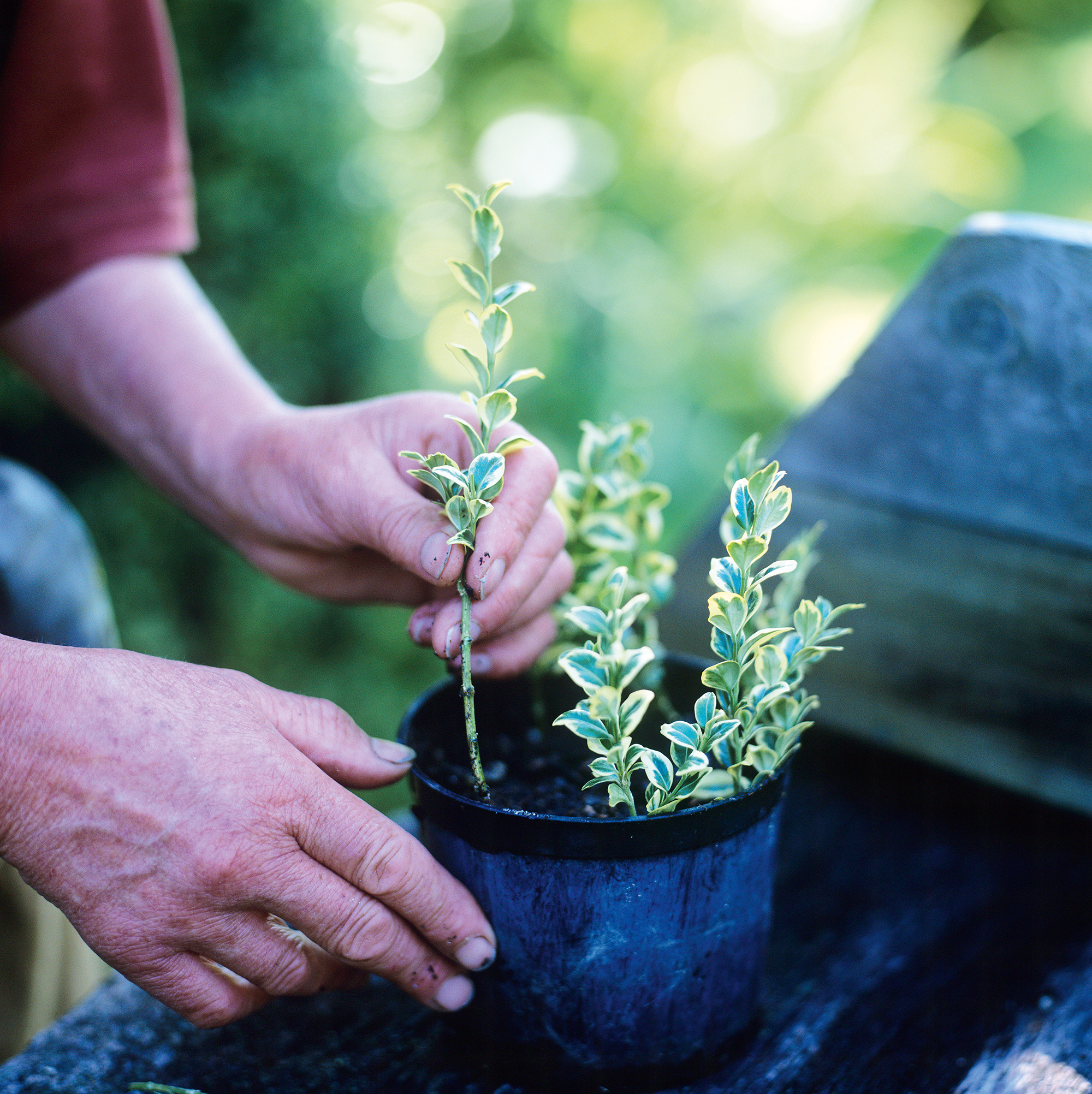
‘Taking cuttings from plants, or propagating as it is technically called, is easy once you know how to do it,’ says Sarah Raven, plantswoman and founder of the Sarah Raven gardening brand.
‘We tend to take cuttings each year to give us plants for next spring and as insurance in case we need to replace any frost-killed plants.’
Design expertise in your inbox – from inspiring decorating ideas and beautiful celebrity homes to practical gardening advice and shopping round-ups.
Different plants benefit from having cuttings taken at different stages – for example, when learning how to take rose cuttings, is often recommended that taking hardwood cuttings (from more mature growth) is more reliable, while softwood (fresh) and semi-ripe cuttings work best for other plant types. Check before making the cut.
1. Choose the best places to cut
The most important part of knowing how to take plant cuttings, is choosing the best possible growth. Always select healthy, straight growth – it should be a non-flowering stem, so check there are no buds present.
With softwood and semi-ripe cuttings, examine the plant for the most vigorous growth. ‘Try to select plant growth that has toughened up a little, so it is not too soft or bendy,’ says Clapp.
If you are taking cuttings from hardwood plants, then you are looking for growth produced this year that has had time to mature. ‘Ideally you are looking for material the thickness of a pencil,’ says Charlene Chick-Seward, propagator at the National Trust’s Nymans, a well-known Grade II-listed garden in West Sussex, England.
2. Take your cuttings
Ideally take plant cuttings in the morning – ‘this is when the plant is turgid, or full of water,’ says Clapp.
Always use clean tools, to minimize the risk of disease transference.
‘Using a very sharp knife, take a short piece of stem from the main plant,’ says Sarah Raven. ‘Trim to just below a leaf joint, so the cutting is 2 inches (5-6cm) long. Just below a leaf node is where there is the highest concentration of natural rooting hormone.'
If you aren’t able to immediately plant your cuttings, then you can temporarily put them into a polythene bag to keep in the moisture. But you must plant them within a few hours.
3. Prepare the cuttings for planting
To prepare your cuttings for planting, strip off all the leaves, leaving only the top pair.
'If the top pair of leaves is large, cut these in half across-ways,’ says Raven. ‘This seems brutal, but they will stay alive and continue to photosynthesize, and with half the surface area they won’t place as much demand on the stem to draw up water to support them. This makes the cutting more likely to root than flop.’
Next, remove the stem tip. ‘It’s at the top that the growth hormone concentrates, so by pinching it out, there’s nowhere for it to go but down, in order to encourage root formation,’ adds Raven.
For hardwood cuttings, make a diagonal cut at the top, above a node. ‘Make sure your top cut is on a slant to help avoid the top of the cutting rotting through the winter months,’ says Chick-Seward.
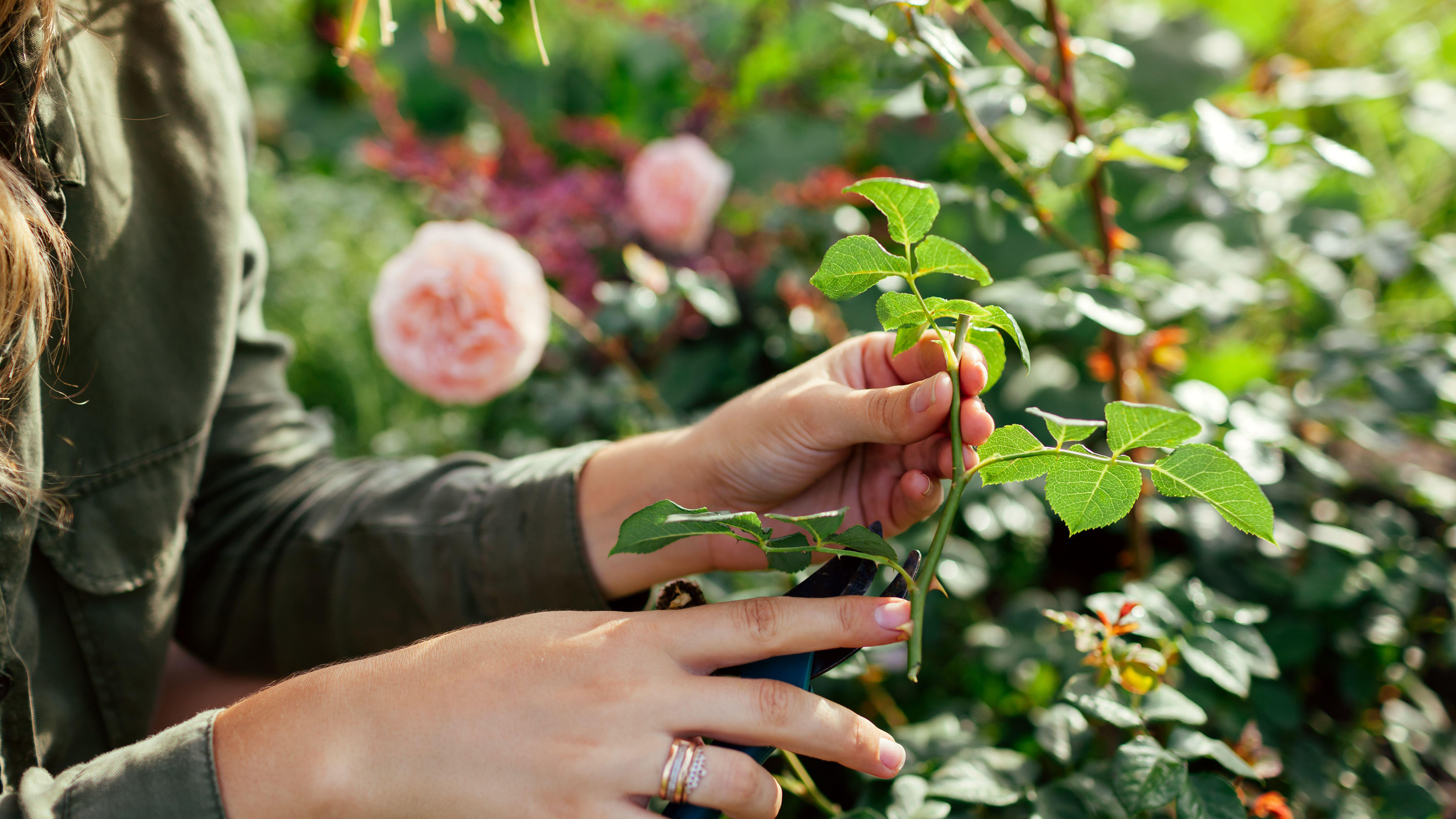
4. How to plant cuttings in soil
Plant your cuttings in free-draining compost. ‘Use a 50/50 mix of peat-free propagation compost and coarse grit,’ advises Chick-Seward.
Fill up your pots and then water your potting mix, prior to planting the cuttings. When researching how to take plant cuttings, you will often be advised to dip the cuttings into hormone rooting powder before planting them, to encourage growth. However, this is not strictly necessary.
Clapp also suggests that honey is a natural alternative, due to its anti-bacterial and anti-fungal properties. ‘Put a few cuttings in each pot, as success is not always guaranteed,’ she adds.
‘Insert your plant cuttings, well spaced, around the edge of the pots, about 2 inches (4-5cm) apart,' says Sarah Raven. 'By placing them around the edge, you encourage quicker root formation as the new roots quickly hit the side of the pot, break, and then branch into more lateral rootlets.’
However, if using long pots, you can plant the cuttings in a row. ‘We place 8-10 cuttings in a long pot – but a small trench in the ground will also do,’ adds Chick-Seward.
Push your cuttings into the compost nice and deep. ‘Each cutting needs to have at least one node underground and one above,’ says Clapp.
Water the compost again, as it’s vital that the cuttings aren’t allowed to dry out.
5. Protecting your cuttings
How much protection your cuttings require will depend on how tender they are – softwood cuttings are much more delicate than hardwood cuttings.
‘Cover the pot with a plastic bag supported on small canes to enclose the moisture,’ says Sarah Raven. ‘Pelargoniums are the exception of the tender perennials and don't need covering, but most things benefit from enclosure. If you have one, put them in a propagator with a bit of basal heat.’
Hardwood cuttings don't need much protection, although you should make sure the potting mix doesn’t dry out. ‘We find hardwood cuttings do best outside in a sheltered position,’ says Chick-Seward.
'During the summer months, make sure you keep your cuttings moist, and by late summer into early fall, you can pot your cuttings on.’
Cuttings need good light but not direct sun.
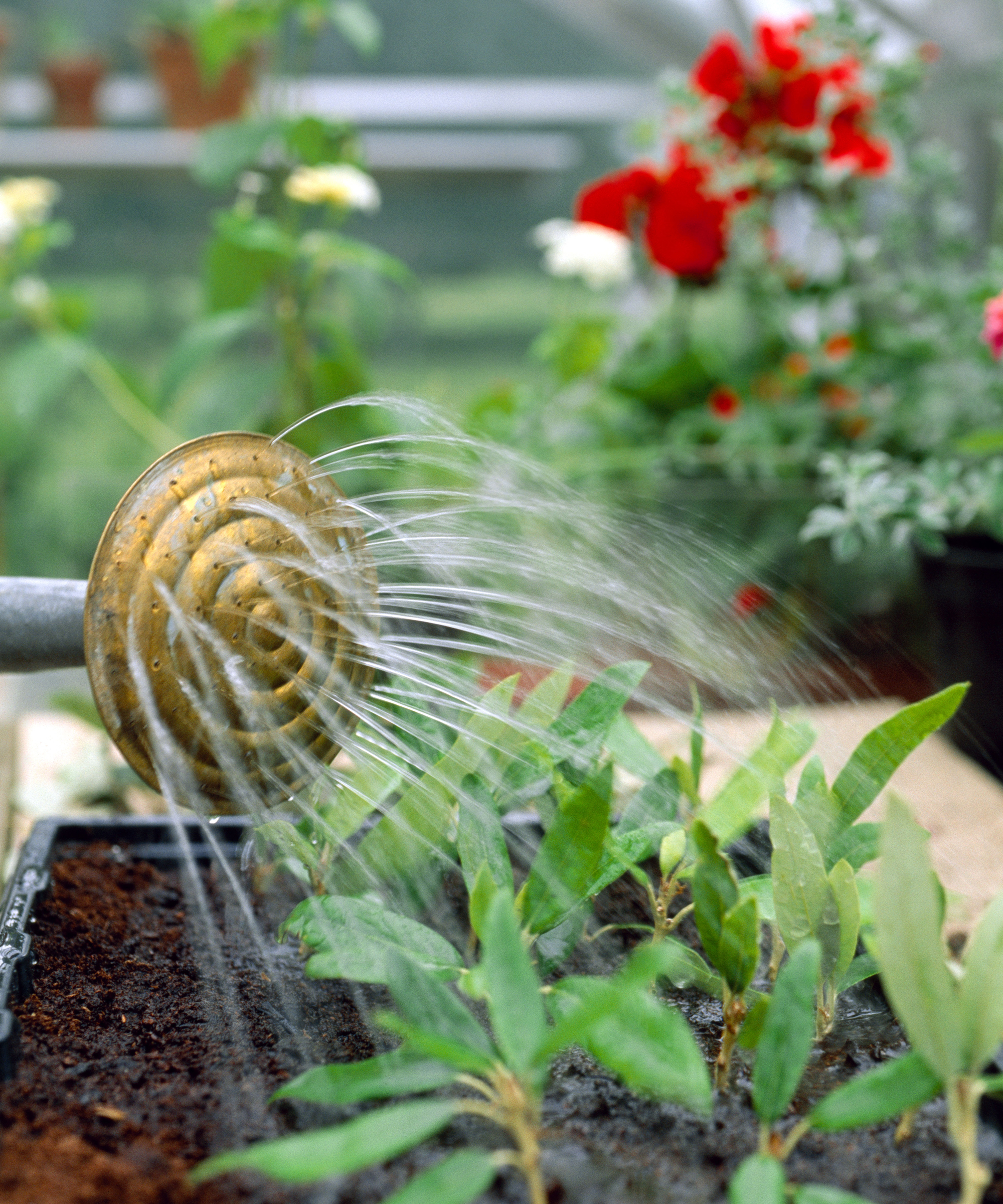
How long do plant cuttings take to root?
‘Plant cuttings should root within two to three weeks,’ says Raven. ‘You'll know they have taken when you see new growth at their tips. Turn over the pot and check for new white roots.
‘Take them out of the propagator and, if it's before October, pot them on. Water only when the compost is dry when you poke a finger down 2 inches (5cm) below the compost surface.’
Bear in mind that hardwood cuttings will take a lot longer to root, and you may find there isn’t much progress until early the following spring.
Your cuttings should be ready to plant out in the spring.
How to take softwood cuttings
A key aspect of learning how to take plant cuttings is to know the right stage for your chosen plant. Softwood cuttings are taken from fresh growth, when the stems are fairly soft and flexible. This method works best with plants that produce lots of new growth in the spring.
‘Softwood cuttings are generally taken in spring or early summer,’ says Clapp.
Though the cuttings will be more delicate than semi-ripe or hardwood cuttings, softwood cuttings are quick to root. However, they can easily die off, so work quickly and give them as much protection as possible.
How to take semi-ripe cuttings
Semi-ripe cuttings are taken from plants in late summer or early fall, once the current season’s growth has had more time to become established.
The method works well with almost any type of shrub, and has a high success rate.
The cuttings may take root during the fall, otherwise they will come along quickly the following spring.
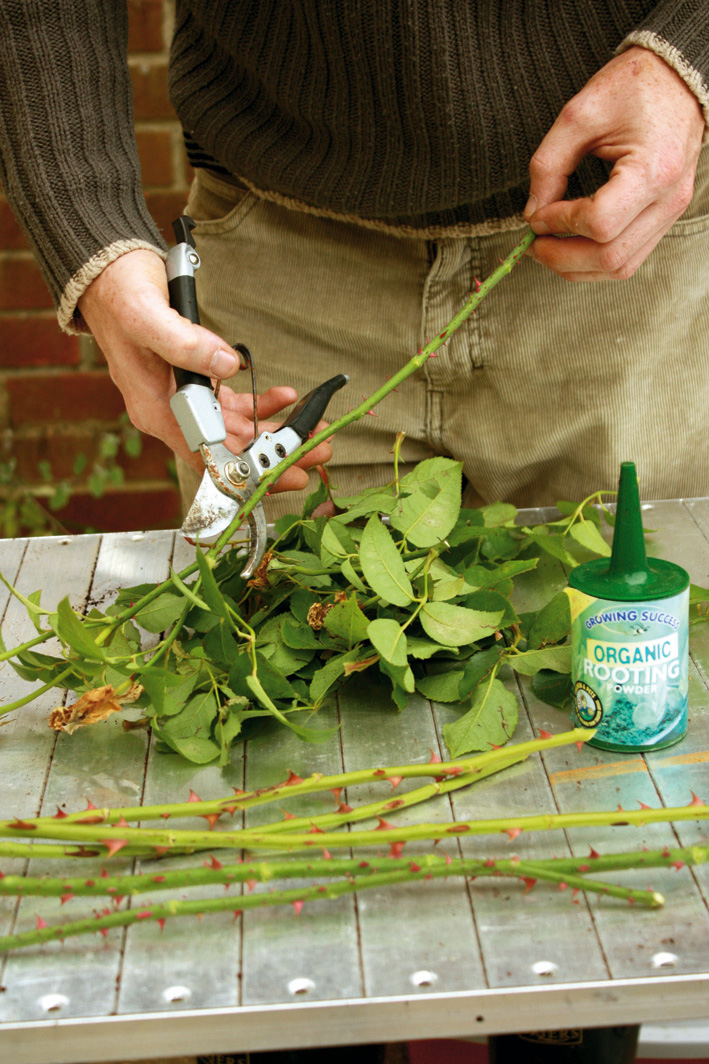
How to take hardwood cuttings
Hardwood cuttings are taken from this year’s growth, which has had a chance to develop and mature into a strong ‘woody’ stem.
‘Late fall into winter is a great time for hardwood cuttings – it's a reliable method to help bulk out the shrubs in your garden,’ says Chick-Seward.
‘Here at Nymans we take many hardwood cuttings of dogwood (Cornus) – their beautiful colored stems make this a fun January or February job to help beat the winter blues.’
Hardwood cuttings are slow to root, but have a high success rate, and need little care or protection. It’s a great method for many shrubs, fruits and trees.
Best time to take cuttings from plants
‘Many gardeners take cuttings in spring – we do our dahlias and chrysanths then,’ says Sarah Raven.
‘In summer, when plants like nemesia, arctotis, osteospermums and lavender start their main growth spurt, we find that’s when they root the fastest.
‘We take salvia cuttings a bit later, in September or October, along with cobaea, fuschias and heliotropes. Pelargoniums are one of the easiest plants to propagate from and a good place to start.
List of plants that grow from stem cuttings
There is a huge range of plants that will grow from cuttings.
- Most shrubs – including roses, hydrangeas, lavender, azaleas, philadelphus, buddleia, erica, hebe, mahonia, and viburnum.
- Hardy and tender perennials – such as salvias, fuchsias, delphiniums, oriental poppies, osteospermum, petunias, verbena, and pelargoniums.
- Hedging plants such as boxwood, holly, lonicera nitida, and privet.
- Climbing plants – including honeysuckle, clematis, jasmine, and Virginia creeper.
- Fruits – including gooseberries, currants, figs, and mulberry.
- Trees – such as plane, poplar, magnolia, conifers, yew, maple, and willow.
- Herbs – including bay, lavender, rosemary, sage, and thyme.
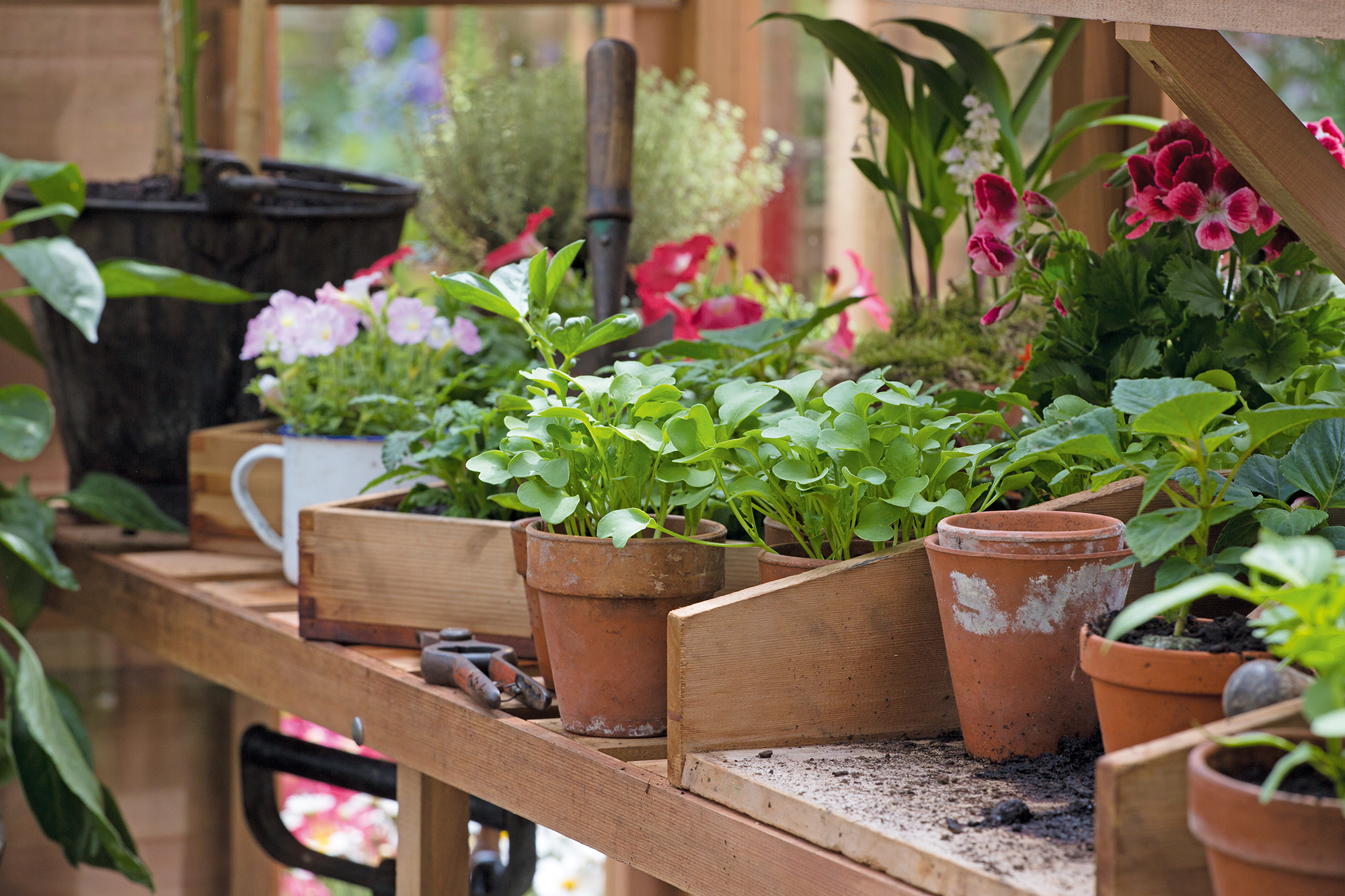
Can you take cuttings from any plant?
While it is not possible to take cuttings from every type of plant, it is certainly a successful method for a large number of them.
Research the best method of propagation for your chosen plant, and if unsure, it’s worth having a go to see if the cuttings will take.
Though delicate, softwood cuttings offer the best chance of success for more difficult-to-propagate plants.
Can you put cuttings straight into soil?
You can put cuttings straight into soil as long as you have prepared them correctly. ‘Cut under a node at the bottom and above a node at the top,’ says Chick-Seward.
You must also remove the lower leaves, leaving only two or three at the top.
Bear in mind the soil needs to be well draining, so if your garden soil is heavy clay, for example, then you need to create a good potting mix. ‘Fill small pots with compost mixed with about one part grit to two parts compost,’ says Raven.
How to grow a plant from a cutting in water
It is possible to grow some plants from cuttings that are simply placed in water. This method works best for common herbs, as well as some vegetables such as pak choi and celery, which will regrow from scraps. However, it is also a suitable method for some house plants, such as pothos, English ivy, philodendron, and even begonias.
Simply place the base of the cutting, or root section if growing a vegetable, into a bowl of water. Within a few days, the cutting should have grown roots. Make sure you change the water regularly, so that it does not stagnate.
Once you can see signs of growth, plant the cutting into well-draining potting mix.

Melanie has worked in homes and gardens media for two decades. Having previously served as Editor on Period Living magazine, and worked on Homes & Gardens, Gardening Etc, Real Homes, and Homebuilding & Renovating, she is now focusing on her passion for gardening as a Senior Editor at Gardening Know How. As a keen home grower, Melanie has experimented with pretty much every type of vegetable at some point – with mixed results. Often it is the simplest things that elude you, which may explain why she just can't seem to master zucchinis.